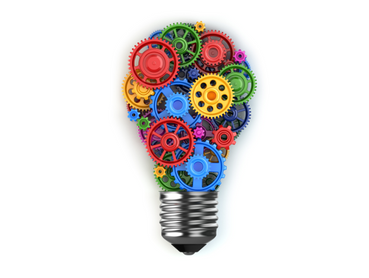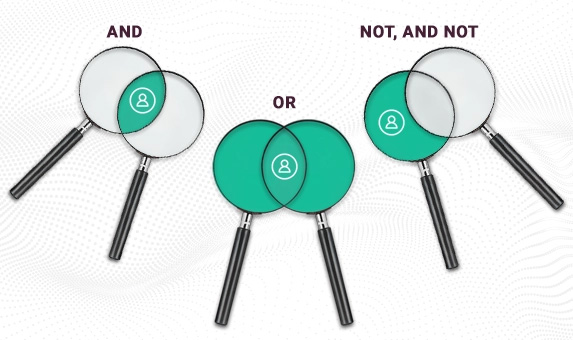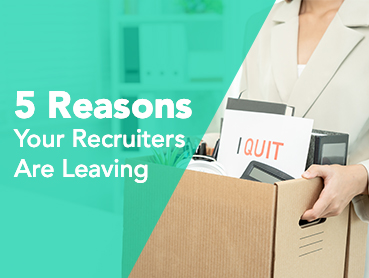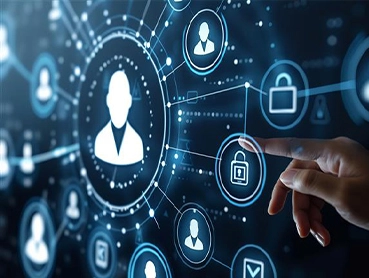Myths of AI recruiting software all HR must be aware of

AI recruiting software is becoming an increasingly popular tool for human resource professionals to streamline the hiring process and identify the best candidates for open positions. However, there are myths associated with AI recruiting software that HR professionals must be aware of. These myths can lead to unrealistic expectations and misunderstandings about the capabilities and limitations of AI recruiting software. In this context, this discussion will explore some of the most common myths associated with AI recruiting software and provide a clear understanding of the reality of this technology. By dispelling these myths, human resource professionals can make informed decisions about the implementation and use of AI recruiting software and maximize its potential to improve the recruitment process.
Here are a few that HR professionals should be aware of:
AI recruiting software can replace human recruiters
The myth that AI recruiting software can replace human recruiters is based on the idea that machines can automate the entire recruiting process, from sourcing and screening candidates to scheduling interviews and making hiring decisions. While it is true that AI can improve certain aspects of recruitment, it is unlikely to completely replace human recruiters.
Firstly, recruitment is a complex and nuanced process that requires human judgment, empathy, and intuition. While AI can analyze substantial amounts of data and perform tasks such as resume screening and candidate matching, it lacks the ability to understand the nuances of human behavior and emotions. For example, an AI system may overlook a candidate who does not have all the required qualifications but possesses other important qualities such as adaptability and creativity.
Secondly, AI recruiting software is only as good as the data it is trained on. If the data is biased or incomplete, the AI system will replicate those biases and inaccuracies. (“HR and AI: How can HR use AI effectively and ethically?”) This can lead to discriminatory hiring practices and perpetuate existing inequalities. Human recruiters can use their experience and expertise to identify and mitigate bias in the hiring process.
Thirdly, AI recruiting software cannot replace the human touch in the hiring process. Candidates want to feel valued and understood, and that requires human interaction. Human recruiters can build relationships with candidates, answer their questions, and provide personalized feedback. AI recruiting software may be able to automate some aspects of candidate communication, but it can never fully replicate the value of human interaction.
Finally, AI recruiting software cannot replace the creativity and innovation that human recruiters bring to the hiring process. Human recruiters can produce new and innovative ways to source and attract candidates, such as through social media campaigns, networking events, or employee referral programs. AI recruiting software may be able to automate hiring tasks, but it cannot replace the human ingenuity that drives them.
While AI recruiting software has the potential to streamline the recruitment process and help in screening resumes and shortlisting candidates, it cannot replace human recruiters entirely. AI is not capable of understanding the nuances of human behavior, and therefore, it is not yet capable of making complex hiring decisions.
AI recruiting software is unbiased
The myth that AI recruiting software is unbiased is based on the idea that machines are objective and neutral and can therefore eliminate human biases in the hiring process. However, this is not necessarily true, and there are several reasons why AI recruiting software can be biased.
Firstly, AI recruiting software is only as unbiased as the data it is trained on. If the data used to train the AI system is biased or incomplete, the system will replicate those input biases. For example, if the data used to train an AI system is based on historical hiring patterns that are discriminatory, the AI system will learn to replicate those patterns. This can perpetuate existing inequalities and result in discriminatory hiring practices.
Too often, program and software coding rely on variables that are correlated with protected characteristics, such as age, gender, and race, to make hiring decisions. For example, an AI system that screens resumes may give a higher score to candidates who graduated from certain schools or who have certain job titles. This also leads to machine learnt bias or discrimination.
One must also remember that software works on algorithms that are not transparent or explainable, thus making it difficult to identify and correct biases eventually. If an AI system is making biased decisions, it can be challenging to understand why and how to fix it. This lack of transparency can also make it difficult to hold companies accountable for discriminatory hiring practices.
The lack of the human element is also a biased way that software work in; AI recruiting software will not consider the context of individual candidates. For example, an AI system that screens resumes may not consider gaps in employment due to caregiving responsibilities or military service, an error that would not be made by a human screening or evaluating an applicant. This reliance on AI can result in qualified candidates being overlooked.
In summary, AI recruiting software is not necessarily unbiased. The data used to train the AI system may be biased, the system may rely on variables that are correlated with protected characteristics, the algorithms may not be transparent or explainable, and the system may not consider the context of individual candidates. While AI recruiting software can improve efficiency and accuracy in certain aspects of the hiring process, it should be used in conjunction with human recruiters to ensure that bias is identified and eliminated.
AI recruiting software is infallible
AI recruiting software is not perfect and can make mistakes. It is crucial to monitor the system and ensure that it is working correctly. HR professionals should review the AI’s output to ensure that it is accurate. AI recruiting software is only as good as the data it is trained on. (“Openfabric AI on Twitter: “2. Bias and Discrimination AI is only as …”) If the data is incomplete or biased, the AI system will replicate those biases and inaccuracies, leading to potential errors in hiring decisions. This in turn can affect the software to accurately interpret and analyze data.
Suggested reading: Data-Driven Recruiting
For example, an AI system that analyzes job candidates’ facial expressions during video interviews may not always correctly interpret their emotions, leading to potential errors in assessing their fit for the role. Additionally, AI recruiting software may not be able to fully understand the context of individual candidates, another relevant example here is when it screens resumes it may not consider the unique circumstances that led to gaps in employment history, leading to qualified candidates being overlooked. And lastly all software is vulnerable to hacking or other cybersecurity risks, which can compromise the integrity and accuracy of the data used in the hiring process.
AI recruiting software can predict job performance with 100% accuracy encompassing the personality of a candidate: AI recruiting software can be used smartly to analyze data to predict job performance. While AI can be helpful in assessing job candidates‘ skills and qualifications, there are multiple factors that can impact job performance that are not only difficult to predict, including human behavior, team dynamics, and the specific requirements of the job but also cannot account for, changes in job requirements or unforeseen circumstances.
In addition, while personality traits can be useful in predicting job performance, they are not the only factor that determines success in a role. Other factors such as work experience, education, and soft skills are also important in predicting job performance.
Furthermore, personality traits are difficult to accurately measure and assess using AI. While there are personality assessments that can be administered online, these assessments can be subject to biases and inaccuracies. For example, candidates may answer questions in a way that they think will be viewed favorably, rather than providing honest answers that reflect their true personality.
While AI recruiting software can analyze and predict job performance based on data, it cannot screen candidates based on their personality traits accurately. Personality is complex and multifaceted, and AI is not yet capable of understanding it fully.
Suggested Read – Empowering Healthcare Organizations with Talent Rediscovery through AI Recruiting Tools
AI recruiting software is costly
While the cost of AI recruiting software can vary depending on the specific solution and vendor, there are internal and external factors that can contribute to the overall cost per hire — either increasing or decreasing for the organization.
To begin with you will always have the initial implementation and setup costs. This can involve customizing the software to meet the specific needs of the organization, integrating the software with existing HR systems, and training HR personnel on how to use the software.
Secondly, like any software you will incur costs of ongoing maintenance and support. This can involve updating the software to reflect changes in recruitment processes or business needs, troubleshooting technical issues, and providing ongoing training and support to HR personnel. A point to note here is that when an organization evolves, the software sophistication is influenced by the level of automation and customization that will be required. Highly customized solutions that automate multiple aspects of the recruitment process may be more expensive than less customizable solutions that require more manual input from HR personnel.
From a sales point of view, you may find vendors that offer a subscription-based pricing model that requires a monthly or annual fee, while others may charge a one-time license fee.
In summary, the cost of AI recruiting software can vary depending on the specific solution, implementation, and ongoing maintenance and support required. While the costs can be significant, the benefits of using AI recruiting software, such as increased efficiency and accuracy, may outweigh the costs for most organizations, while keeping in mind their scale and global footprint.
Suggested Read – Four things to look for in an AI recruiting tool
In conclusion, AI recruiting software can be a useful tool for HR professionals, but it is essential to be aware of its limitations and potential biases. While AI recruiting software can streamline the recruitment process, it is not a solution for all recruitment challenges.
Over to you
Human resource professionals should be careful not to rely too heavily on AI and should always use it in conjunction with human intelligence to make fair hiring decisions possible. HR professionals should use AI as a tool to complement their recruitment process and not as a replacement for human judgment. Because in the end, if you replace the ‘human’ with AI, you are simply left with a resource!
To get more clarity on the working and impact of AI recruiting software, the best way is to try it out yourself. Request a Demo of Arya by Leoforce today!





